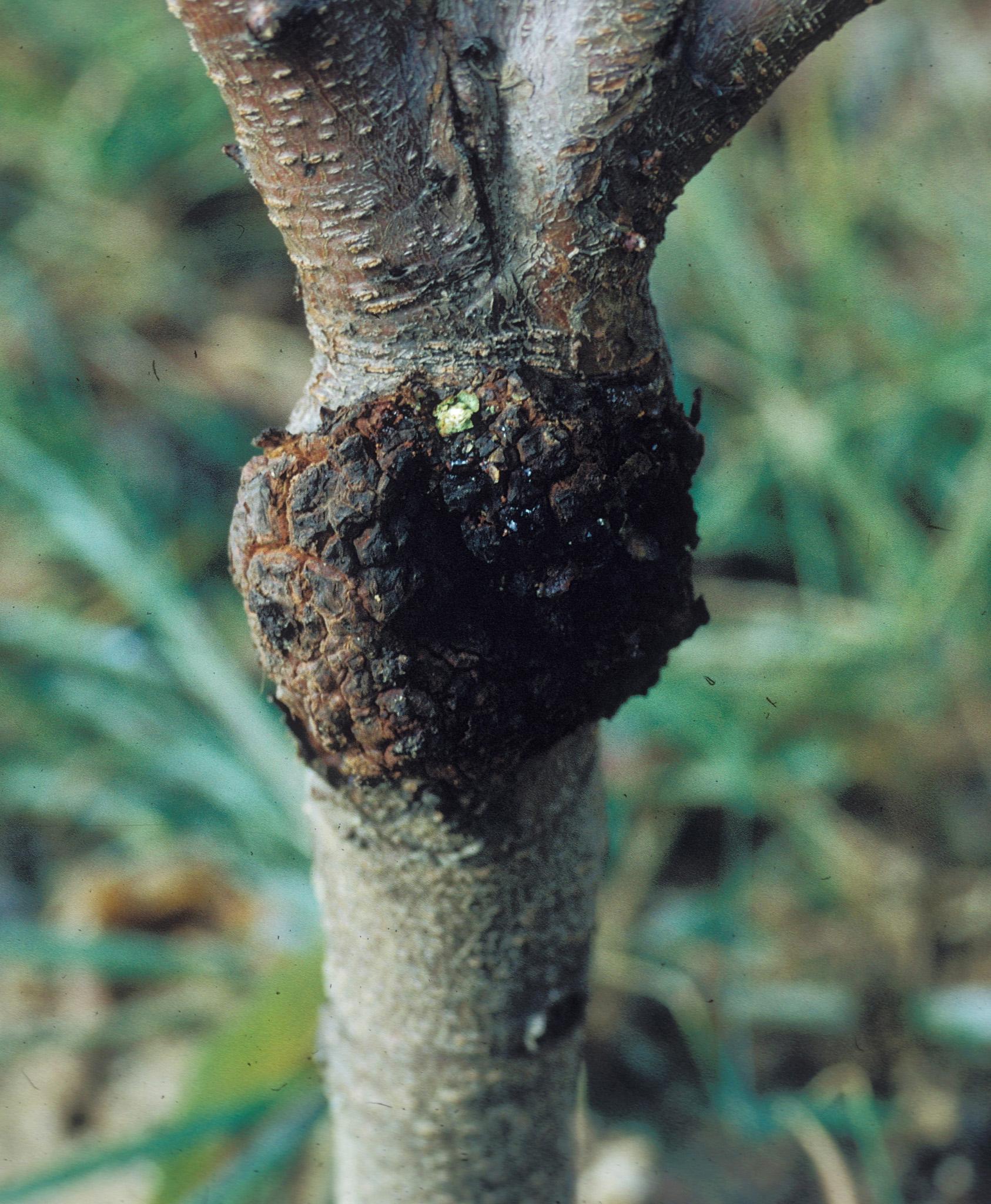Crown Gall of Peach
Return to Diseases
Crown Gall (Rhizobium radiobacter, formerly Agrobacterium tumefaciens) is a bacterial disease that affects a wide range of host plants, including stone fruits. Tumor-like galls girdle infected young trees at the soil line or on the lower trunk, causing stunting, poor vigor, and eventually tree death. Early symptoms include small, wartlike round galls that develop in late spring; galls expand through the growing season, turning rough and brownish-black. Bacteria enter trunks and roots through wounds (pruning cuts, insect punctures, freeze damage, equipment damage). The soilborne bacterium survives for several years in soil and is moved through infected plant material and through soil (drainage water, cultivation equipment).

Crown gall.
(Photo: University of Georgia Plant Pathology, University of Georgia, Bugwood.org)
Management:
- Begin with disease-free stock plants.
- Avoid injury and wounds (freeze, insect, pruning); consider planting cold-tolerant cultivars.
- Rotate crops if site has a history of disease
- Avoid susceptible plants, such as apple and brambles.
- Avoid movement of infested soil.
